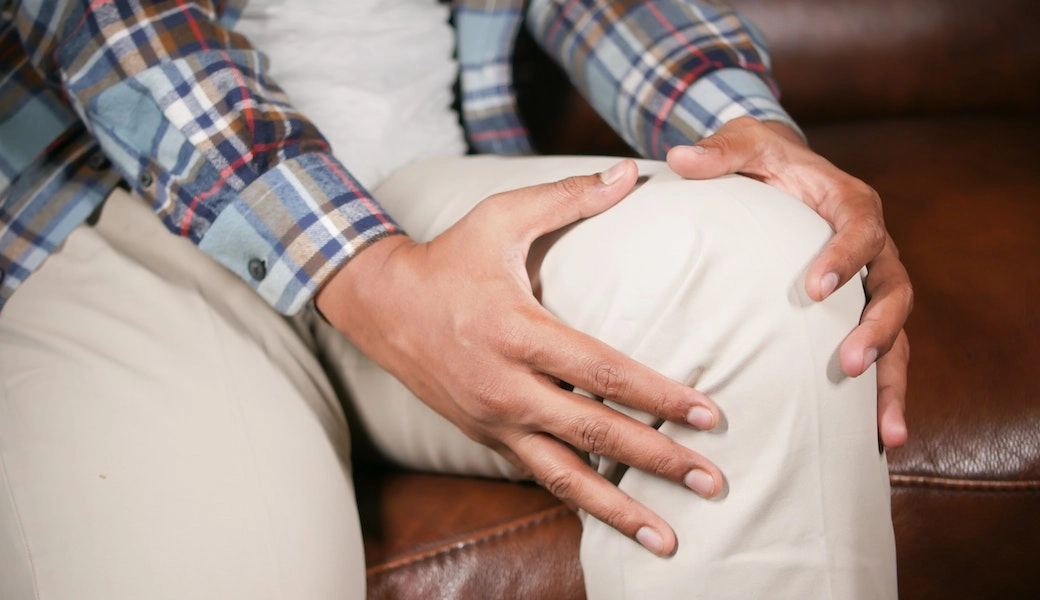Have you injured your common peroneal nerve? Are you looking for ways to treat it? You’ve come to the right spot. Your local chiropractic clinic in Anchorage can help.
The common peroneal nerve, or fibular nerve, runs from the back of your knee, down your leg, across your foot, and to the area between your big toe and your second toe. Normally, it allows for sensation all throughout those respective areas.
On Chiropractic Treatment of Common Peroneal Injuries
Chiropractors are experts in the musculoskeletal and nervous systems. As such, a chiropractor is well-suited to treat a common peroneal nerve injury. Similarly, a physical therapist is focused on treating and restoring physical disabilities. They, too, have a lot to offer regarding common peroneal nerve injuries. When used together, these two disciplines can offer powerful, effective treatment options.
One case report in Science Direct tells of a 24 year-old man who suffered from severe impairment of the functioning of his left foot. A series of manual manipulations of the spine and fibular head, in conjunction with neurodynamic mobilization, successfully restored full function to the left leg while reducing pain and increasing range of motion.
A second case reported in Science Direct involved a 14 year-old girl suffering from right foot drop (a development from her peroneal nerve palsy, a type of peroneal nerve injury). Through the use of chiropractic manipulative therapy a great deal of the dysfunction was resolved and much of the functionality of the leg was restored.
A third case, this one reported in the Journal of Contemporary Chiropractic, involved a 61 year-old man with a case of drop foot caused by peroneal neuralgia (a type of peroneal nerve injury). The man was treated with a combination of chiropractic care and physical therapy. The end result was a complete resolution of symptoms.
As you can see, chiropractic care and physical therapy have a lot to offer someone suffering from a common peroneal nerve injury. Let’s dig into the details.
Common Peroneal Nerve Injuries
Like other nerve injuries, an injury to your common peroneal nerve can be the result of a variety of different causes. Although it can become inflamed and injured on its own, often other injuries can impinge upon it and, just as effectively, irritate or damage it. A dislocated knee or a broken bone could compress the nerve resulting in an injury.
A simple surgery complication, like a nicked nerve could also cause issues. Strenuous activity, like that found in many sports and other activities, can lead to an injury of the fibular nerve. Soccer, baseball, basketball, football … All of these can strain or injure the common peroneal nerve. It can even be injured by spending too much time wearing high heels.
Finally, since the common peroneal nerve is a branch of the sciatic nerve, problems in one nerve may be confused with problems in the other. If this is the case, you may find yourself trying to figure out which nerve is really the issue. You can check out this post to learn more about how to treat and effect a cure for sciatica.
Treatment of Common Peroneal Nerve Injuries According to an Anchorage Chiropractor
A standard rule in medical care is to exhaust conservative methods of treatment before using more advanced, and potentially more dangerous, methods like surgery or high-powered painkillers. At the same time, you shouldn’t put off treatment either, as that will likely let the problem get worse and worse and potentially get very serious.
In the case of a common peroneal injury, conservative treatment options include:
1. Posture, Gait, and Weight Distribution Analysis
A chiropractor or physical therapist can analyze posture, gait, and weight distribution to determine where the issue is coming from and note the corrections to the musculoskeletal system that are needed to resolve the issue.
2. Passive Physical Therapy
These techniques combine electrical muscle stimulation with the use of heat, ice, ultrasound, cold laser, chiropractic massage, and traction to augment normal chiropractic care making it significantly more effective.
3. Chiropractic Massage
Under the direction of a chiropractor, a massage therapist can massage tight muscle groups so that they relax and loosen. This can help reduce stress, inflammation, and pain, and can stimulate the release of endorphins – the body’s own natural painkillers.
4. Chiropractic care
Using hip and knee adjustments, your Anchorage-based chiropractor can help correct posture and skeletal alignment issues. In some cases, this will alleviate pressure on the nerve allowing it to heal. For more on using chiropractic care to treat knee pain check out this post.
5. Physical Therapy Exercises
A physical therapist will recommend a variety of exercises to strengthen your muscles. This will help correct alignment issues now and going forward, so as to keep pain from recurring. Some of these exercises include: simple stretching, strength training, yoga, and core strengthening. If gentler exercises are needed, your physical therapist may recommend walking, swimming, or water aerobics instead.
Stretching exercises are, generally, used to loosen and lengthen muscles which, in turn, reduces tension and stress. When properly done, they can help reduce inflammation and pain. Yoga is an ancient system of controlled stretching developed by the Yogis of India. It not only stretches your muscles, but helps build them up and strengthen them. The stronger the muscles, the less likely that joints are likely to get out of whack.
However, don’t just pick up Yoga on your own. If you are doing yoga to help treat a medical condition like a common peroneal knee injury make sure you are doing so under the guidance of a fully-qualified yoga instructor.
Stretching exercises may not seem like much, but they are a common therapy implemented in chiropractic care and physical therapy for various issues, from pain in the common peroneal nerve to inflammatory back pain and more.
6. Physical Therapy Modalities
Other modalities of physical therapy can be used to reduce pain and swelling, as well as strengthen certain muscles. This can not only make life more bearable, but it may also be able to resolve the problem entirely. Here at Better Health Alaska, we offer physical therapy modalities throughout the Juneau area to treat common peroneal nerve injuries as well as many other issues.
If all conservative therapies fail to produce results, the remaining options available to a patient suffering from a common peroneal knee injury include:
- Surgery – if the pain is caused by a growth (bone, tissue, etc…), a surgeon can remove said growth. That may eliminate the problem.
- Grafting – if the nerve, itself, is damaged, a surgeon can graft a new nerve in place, effectively replacing the damaged section of a nerve.
- Pain-killers – although pain-killers alone likely will not solve the problem, they can make life more bearable, and they are especially useful to help in the recovery process when a patient opts for grafting or other surgery.

Local Anchorage Chiropractor Lists Symptoms of Common Peroneal Nerve Injuries
An injury to the common peroneal nerve can cause a variety of symptoms. Generally, most of these symptoms occur in the leg, knee, and foot that house the nerve in question. Sometimes, the symptoms are limited to a tingling sensation. Sometimes the symptoms will advance to numbness or even weakness in the affected areas.
Generally speaking, you should seek professional help the moment you recognize you are having symptoms. The damage to the nerve can get worse, if left untreated over a long period of time. The typical symptoms of an injury to the common peroneal nerve include:
- A tingling or pins and needles feeling along the outside of the leg and across the top of the foot.
- A tingling or pins and needles feeling in the area separating the big toe and second toe
- Numbness along the outside of the leg or across the top of the foot.
- Numbness in the region separating the big toe and second toe
- Muscular weakness in the foot and toes
- Difficulty walking including the condition called foot drop.
If the condition is diagnosed quickly, your local chiropractor from Anchorage or another physician can start you on a treatment regimen tailored to the particulars of your specific situation. They will, most likely, start you on a combination of conservative techniques like physical therapy, chiropractic care, and other techniques like those listed above.
Conclusion
An injury to the common peroneal nerve can cause significant problems, but these problems can be resolved if addressed quickly with the aid of a trained medical professional like a doctor or your Anchorage chiropractor. The sooner, the better.
Sources:










